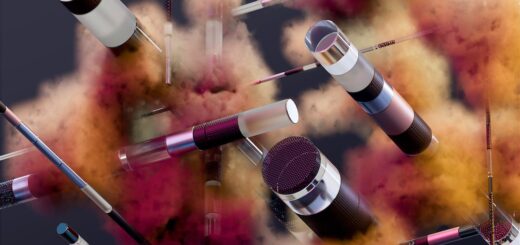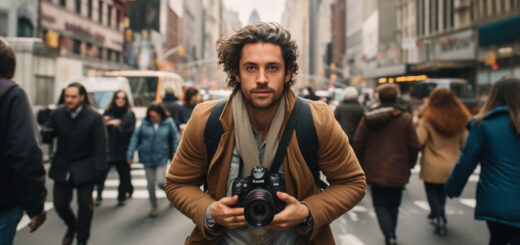Top AI Photography Techniques You Need to Know for Stunning Photos
Photography has come a long way, and with the advancement of technology, Artificial Intelligence (AI) is now playing a significant role in enhancing and transforming the way photographers capture and edit images. This article will explore the top AI photography techniques you need to know for stunning photos, with insights into how they work and how you can incorporate them into your workflow to produce visually impressive results.
Table of Contents
- High Dynamic Range (HDR) Imaging
- AI-powered Photo Editing Software
- AI-assisted Composition
- Intelligent Lighting Adjustments
- AI Noise Reduction
- AI-powered Style Transfer
- AI-driven People and Object Recognition
- Capturing Motion with AI
- Frequently Asked Questions
1. High Dynamic Range (HDR) Imaging
One of the most popular AI techniques in photography is High Dynamic Range (HDR) imaging. HDR combines multiple images with varying exposure levels into a single photo, which results in capturing a broader range of details in both the highlights and shadows. As a result, HDR can produce more vivid and realistic images, especially when photographing high-contrast scenes.
- How to use HDR: To leverage HDR, take a series of images at different exposure levels – usually one under-exposed, one overexposed, and one correctly exposed. You can then use photography software, such as Adobe Lightroom or Photoshop, to blend these images and create a stunning HDR image that captures all the details of the scene.
- Benefits of HDR: HDR helps to represent a scene more realistically, ensuring that no details are lost in either the shadows or highlights, ultimately resulting in striking and visually compelling images.
2. AI-powered Photo Editing Software
AI-powered photo editing software is revolutionizing the photography industry with intelligent tools that automate complex editing tasks, making the editing process quicker and more efficient.
Some popular AI-driven photo editing tools include:
- Adobe Sensei
- Skylum Luminar AI
- Photolemur
- Topaz Labs Sharpen AI and Denoise AI
- Let’s Enhance
These tools utilize advanced machine learning algorithms and neural networks to provide powerful features such as automated sky replacement, skin retouching, and masking – tasks that would normally take hours if done manually. By embracing these AI-powered tools, photographers can save time, streamline post-processing, and produce jaw-dropping results.
3. AI-assisted Composition
Another AI technique that has changed the game for photographers is AI-assisted composition. This feature uses advanced algorithms to analyze an image and suggest the most visually appealing composition. This can be particularly helpful for novice photographers looking to improve theircomposition skills or for experienced photographers seeking a fresh perspective on their shots.
- How to use AI-assisted composition: Many modern cameras and smartphones come equipped with AI-driven compositional tools built-in. These tools analyze the scene you’re capturing and provide suggestions for the optimal framing, or automatically adjust the composition in real-time.
- Benefits of AI-assisted composition: By relying on AI to help create a balanced and visually appealing composition, photographers can remove some of the guesswork and achieve better results in their photos.
4. Intelligent Lighting Adjustments
Similar to how AI powers HDR and composition suggestions, AI can also help photographers make intelligent lighting adjustments during the post-processing stage. This is particularly useful in scenarios where the available lighting is less than ideal, and the editing process can be difficult.
- How to use AI for lighting adjustments: AI-driven photo editing tools, such as Skylum Luminar AI and Adobe Lightroom, offer automatic exposure and lighting adjustments based on the content of the photo. This helps to bring out the best in the image and create a balanced, well-lit scene.
- Benefits of intelligent lighting adjustments: Automated lighting adjustments save time and effort during post-processing and can contribute to producing more professional-looking images.
5. AI Noise Reduction
Noise is an unwelcome byproduct of shooting in low-light conditions or using high ISO settings, often resulting in grainy or blotchy images. AI-powered noise reduction tools can help minimize this noise without losing valuable details, producing cleaner and clearer images.
- How to use AI noise reduction: Many AI-powered photo editing tools, such as Topaz Labs Denoise AI and Nik Collection Dfine, offer advanced noise reduction capabilities. Simply load your image into the software, and the AI algorithms will automatically detect and remove noise while preserving the important details.
- Believes of AI noise reduction: Noise reduction tools powered by AI are significantly more effective than those relying on traditional methods, leading to cleaner images without compromising the overall quality.
6. AI-powered Style Transfer
AI-powered style transfer is a popular and fun technique that allows you to apply the artistic style of a reference image to your original photo. This can result in a whole new way of presenting your photographs, with a unique and personalized touch.
- How to use AI style transfer: Tools like DeepArt, Prisma, or even Adobe Photoshop’s Neural Filters can be used for AI-driven style transfer. To use this feature, simply select the target imagery style and apply it to your photo – the AI-powered software will then do the heavy lifting and apply the new artistic style to your image.
- Benefits of AI-powered style transfer: This technique offers photographers a new way to express their creativity by transforming their photos into unique works of art, inspired by various artistic styles.
7. AI-driven People and Object Recognition
AI-driven people and object recognition technology can recognize and analyze human faces, animals, and various objects within a photo. This enables photographers to quickly find images in their library or automate tagging and organization.
- How to use AI-driven people and object recognition: Many modern photo management and editing tools, such as Adobe Lightroom or Google Photos, come with built-in AI-powered object recognition features. These tools can automatically identify and tag people or objects within your image library, making it easy to locate specific shots.
- Benefits of AI-driven people and object recognition: Efficiently sorting and categorizing your photo library saves valuable time and helps you stay organized, allowing you to focus on the creative aspects of photography.
8. Capturing Motion with AI
Using AI technology, photographers can more accurately capture motion in their images. This involves tracking moving subjects and predicting their trajectory, allowing for better automatic focus and sharper results.
- How to capture motion with AI: Many modern cameras already integrate AI-powered motion tracking features to help keep moving subjects in focus. By leveraging AI’s ability to accurately predict motion, your camera can maintain optimal focus on a moving subject, allowing you to capture stunning action shots with ease.
- Benefits of capturing motion with AI: The ability to accurately capture fast-moving subjects is critical for action and sports photographers, and AI-powered motion tracking ensures you won’t miss that perfect shot.
9. Frequently Asked Questions
-
Do I need expensive equipment to use AI photography techniques?
Many AI-powered features are already integrated into modern cameras and smartphones, so it’s very likely that you already have access to some AI capabilities. However, to fully utilize the potential of AI in photography, a dedicated AI-powered photo editing software can provide even more advanced tools and options.
-
Do AI photography techniques replace the need for a skilled photographer?
While AI can greatly enhance and support your photography process, it doesn’t replace the need for skillful photography. Photographers still need to understand the fundamentals of photography, know how to handle various lighting conditions, and be able to capture a compelling story or moment through their images. AI simply empowers photographers by automating certain tasks and providing new creative opportunities.
-
Can AI be used in video as well as still photography?
Yes, AI technology is finding applications in both still photography and video production. In video, AI can assist with tasks such as motion tracking, color grading, and object recognition, helping videographers create stunning and professional content.
In conclusion, artificial intelligence offers a wide range of tools and techniques that can dramatically improve the quality of your photography. By learning how to harness the power of these AI-driven techniques, you can transform your images, streamline your workflow, and elevate your photography to new heights.



